|
FN 225: Nutrition
Rathakette, Ph.D. Health Professions Division Lane Community College Eugene, Oregon
LECTURE
1B: (a continuation of Chapter 1-Food Choices and
Human Health) III Identifying Valid Nutrition Info in the News: Scientific Research Why do we want to know how to identify valid nutrition info in the news? We want to know how to identify "valid nutrition info in the news" so we'll have some idea who to believe
since this is one of the main ways people get their nutrition
information.
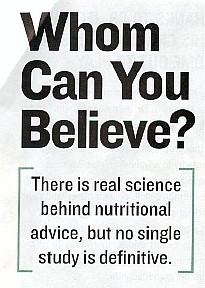 Nutrition Today, September/October 2007 "Twilight of the Gatekeepers: An Uncomfortable Fable" Sylvia Rowe MA and Nick Alexander BA The above article discusses
the explosion of new health and
nutrition-oriented Web sites that may have been created by individuals
or organizations not formally tied to the scientific community. "Internet democracy bestows on these sites, often
distinguished by a particular political, philosophical, moral, or other
nonscientific point of view, the same importance, credibility, and
prominence as sites formerly regarded as authoritative."
"Just as the Internet has fostered the prosperity of a citizen-based journalism, with a varied and growing assortment of 'news blogs' and the like, so has it encouraged a kind of citizen-based science movement, where publication takes place solely or primarily in cyberspace, where peer review has no accepted place". "There is no denying that emerging computer and Internet technology has opened up a brave new world in which scientists and other thinkers can, with ever increasing speed, share their ideas and research globally. Theories can be analyzed and breakthrough conclusions reached, enhancing human health at a speed and scale never before realized. "There is also no denying that the same technologies are creating a world in which utter nonsense or worse can do a reputable job of masquerading as scientific truth and can recruit hapless believers and followers to intellectual mischief-or worse. "Are we heading toward a world of greater clarity or greater confusion?" I, for one, don't know the answer to that question, but the following are some guidelines to consider when trying to decide if something is valid nutrition information. A. Has Characteristics of GOOD Scientific Research. 1. Researcher (who might not be the author) has good credentials Usually done by someone with a doctorate (PhD) or a master's (MS) in nutrition or another related field or an MD who has advanced training in nutrition. You can usually identify PhDs or MDs with nutrition training by their place of work (a major university with a strong nutrition program or a government agency for nutrition or health). more later in his lecture about places of work........
It's important to ask- Who paid for the research?
Bias because of who paid for the study doesn't mean it's definitely a bad study, but it's a study that certainly should be repeated to see if someone else gets the same results. I listened to a story on the radio that you can listen to if your computer is set up to do that: Researchers Find Bias in Nutrition Studies by Allison Aubrey, NPR Morning Edition, January 9,
2007 · A new study, co-authored by Harvard researchers and
analysts from the Center for Science in the Public Interest, suggests
there's a systematic bias in nutrition studies funded by food companies.
|
2. When possible, double blind with a placebo and a reasonable number of subjects were used for a long period
of time.
* Definition of placebo- NOT
a real treatment but it might induce body's natural healing process
* Double blind: neither the receiver of the treatment or the giver of the treatment know what the person is getting * Reasonable number: it depends on what is reasonable to do. Ideally, there would be a large number of people studied, but sometimes there's not funding to study a large number. 3. Study results reported so others can replicate
(duplicate) and
reported in respected, refereed (articles evaluated by persons with nutrition credentials) scientific journals |
|
Below is an example of a respected, refereed scientific journal:
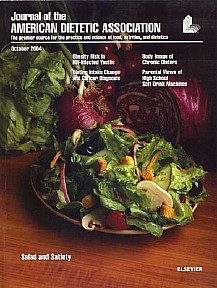 |
Articles on the cover of the above October 2004 issue of the Journal of the American Dietetic Association:
Obesity Risk and HIV-Infected Youth
Dietary Intake Change and Cancer Diagnosis Body Image of Chronic Dieters Parental Views of high School Soft Drink Machines |
|
Where in a publication can
you find credentials for "referees"?
usually near the beginning of the publication In this publication, the "referees" are called the"Editorial Board". Notice their credentials (PhD, RD, etc.) as well as their place of work. |
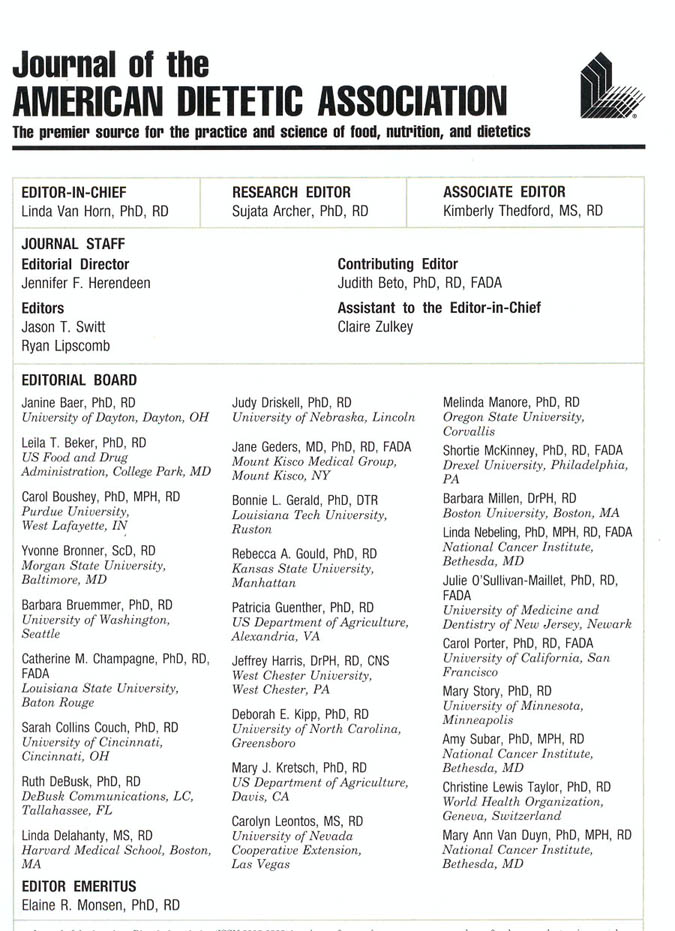
/
Prevention Magazine, December 1980 Editor: Robert Rodale Executive Editor: Mark Bricklin Managing Editor: John Feltman Assistant Managing Editor: William Gottlieb Research Chief: Carol Baldwin Senior Editors: Jane Kinderlehrer, John Yates Associate Editors: Linda Shaw, Kerry Pechter, Tom Voss, Katherine Randall Assistant Research Chief: Carol Matthews Copy Chief: Jeanne Rogers Art Director: Laura Tylersmith Research Associates: Marion Wolbers, Susan Rosenkrantz, Sue Ann Gursky, Martha Capwell, Joann Williams Research Librarian: Liz Wolbach Head Librarian: Janet Glassman Reader’s Service Director: Christy Kohler Beauty Editor: Virginia Castleton Office Manager: Carol Petrakovich Technical Director: Mark Schwartz, PhD Photography Director: T.L. Gettings Photographer: Margaret Smyser What credentials do you see in the above list of editors, etc. listed at the front of a 1980 issue of Prevention Magazine? Now look below at a more recent issue. Prevention Magazine Editorial Advisors (page 20) September, 2004  James W. Anderson, MD
Professor of Medicine and Clinical Nutrition, University of Kentucky
College of Medicine
Kelly Brownell, PhD
Professor of Psychology, Yale University; Director of Yale Center for
Eating and Weight Disorders
Judith Stern, ScD, RD
Co-director, Center for Alternative and Complementary Medicine and
Professor of Nutrition and Internal Medicine at the University of
California, Davis
plus 13 others |
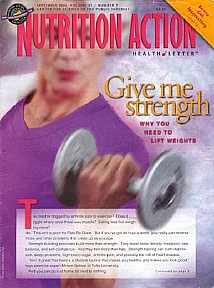 |
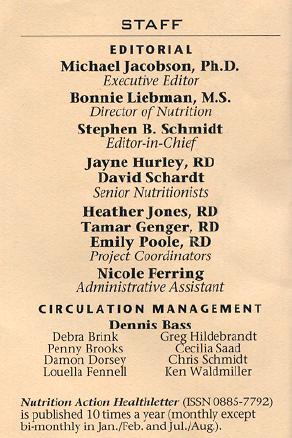 |
| A journal usually is a
primary source of information, while a magazine [or a newsletter] is a secondary source).
What does this mean? A primary source means that the author of the article did the research. A secondary source means that the author is reporting about someone else's research. |
| Looking at the examples of
publications above (Prevention, Nutrition Action Healthletter and the Journal of the American Dietetic Association), which do you think is a primary
source of information and which a secondary source? Click here if you think Prevention is an example of a primary source.
Click here if you think Prevention is an example of a secondary source. Click here if you think Nutrition Action Healthletter is an example of a primary source. Click here if you think Nutrition Action Healthletter is an example of a secondary source. Click here if you think the Journal of the American Dietetic Association is an example of a primary source. Click here if you think the Journal of the American Dietetic Association is an example of a secondary source. |
|
4.
Broad generalizations NOT made 5. If research on animals, findings not applied directly to humans 6. If research done on specific segments of population or people living in a clinical setting, it's not applied to ALL people. For example, if a study finds that large doses of vitamin E affect Alzheimer's patients, the researcher or author avoids implying that EVERYONE should take large doses. |
| What questions would you ask about the HGH study described in your packet this way? A 1990 study published by an MD in The New England Journal of Medicine found that after 6 months of thrice-weekly injections of human growth hormone (HGH), compared with untreated controls, participants had a significant 1. increase in lean body mass 2. increase in bone density and 3. a decrease in body fat. After the release of this study, sales of HGH skyrocketed. These questions will be discussed in our FORUM this week. |
"Effects of human growth hormone in men over 60 years old."
The New England Journal of Medicine July 5, 1990 Click on the link above to see if you can find the answers to your questions. (The New England Journal of Medicine is an example of a respected refereed journal. |
| QUESTIONS | BRIEF ANSWERS |
| 1. | 1. |
| 2. | 2. |
| 3. | 3. |
| 4. | 4. |
| 5. | 5. |
| Here's another article about Human Growth Hormone: Myth Meets Science: Everybody's talking about human growth hormone, and lots of people are using it. But what does it do? By Jeneen Interlandi, NEWSWEEK, February 25, 2008.
|
B. If research studies are discussed, they're usually one of several types of Scientific Research Studies: 1. Case Study- studying ONE INDIVIDUAL. What is the difference between a case study and a testimonial? A case study is done by a researcher and a testimonial is one person describing their experience, but an outside person did not observe them for research. 2. Observational Study- simply monitoring and/or collecting information. No treatment given so NO PLACEBO. The researcher is simply COLLECTING INFO. 3. Epidemiological Study (another type of Observational Study)- examines a particular large (maybe hundreds or thousands) population to determine what people's health patterns or risk factors have been OR are over time and then this is linked with incidence of disease or other health problems. These people were/are NOT given a treatment. (often retrospective, which means it's looking at the past).
Epidemiological studies
(a) look at a large population of people (b) often over a period of time and (c) relate their findings to disease rates (d) NOT given a treatment 4. Laboratory Study- study done under tightly controlled conditions. Since it's difficult to tightly control conditions for humans, these studies are usually done on animals or in test tubes . 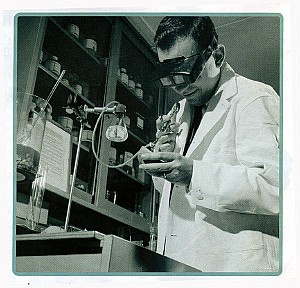 5. Intervention Study- (often called "clinical trials") people ARE given a treatment and the results are observed (prospective, meaning they do something and see what happens rather than looking at something that already happened, which is what epidemiological studies do). Definition of treatment: something given (like a supplement/certain food/advice) OR something done (like massage or physical therapy). Study Questions and Exams will ask you to identify the type of study research is describing. I hope the chart below will help a little. |
| Epidemiological |
Intervention
|
Observational |
|
| SIZE of group |
large group | can be large group
but not always |
can be large group but not always |
| TREATMENT? |
no treatment relate results to disease risk usually collect info over time |
a
treatment (pill,
advice, therapy) often with a control group who might be given a placebo |
no treatment |
| Watch the video clip below to help fill in the next part of the lecture outline in your packet. |
| 12-minute Video
Clip: What Kind of Study Is This? |
| IV Identifying Nutrition Info that is unreliable (not valid) & that should make you suspicious "Earmarks" (markers) of unreliable nutrition
1. Too good to be true 2. Suspicious about food supply 3. Only Testimonials 4. Fake credentials 5. Unpublished studies 6. Persecution claims 7. Authority not cited (Nutrition training not defined) 8. Motive: Personal gain 9. Advertisement 10. Unreliable publication (Unrefereed) OR unreliable Internet site 11. Half truths (logic without proof; in other words part is true & part is false, not known or misleading) |
| EXAMPLE from http://www.wp.com/queen bee (This site no longer exists) What is Royal Jelly? According to this site, "Royal jelly is the exclusive food of the queen bee. The diet of royal jelly transforms a worker bee into a queen bee. For centuries royal jelly has been used for its extraordinary benefits to strengthen the defense system. " Rochelle Harris, Nutritionist says "I have been a natural food enthusiast for more than 30 years during which time I have used royal jelly for energy, stamina, and strength. The Queen Bee royal jelly has made such a dramatic difference that I now recommend it to all my clients." Why is the information about Royal Jelly an example of a half truth? The half of the Royal Jelly information that is true is that royal jelly IS the exclusive food of the queen bee. The diet of royal jelly transforms a worker bee into a queen bee
The half that is false, unproven or misleading is that it does any good for humans.
Rochelle Harris gave a testimonial that it helped her. There is no evidence that it does the same thing for humans and the ad didn't cite any evidence. When you hear of something that sounds amazing, you should look carefully for something about it is only half true. This is a very common trick pulled by people trying to sell us something. Something about what they're saying sounds logical so we are inclined to believe everything they're saying, making us willing to spend our money. Royal Jelly info: Give at least 3 reasons why it is unreliable nutrition information. (Use “Earmarks” previously listed.) See if you can come up with three reasons. If you have trouble, send me (or another student) a message.
|
|
V 4 Guidelines for Evaluating Nutrition Info on the Web
(from the LCC library) 1. AUTHORITY. To help determine, look for recognized credentials. What does “recognized” mean? An outside organization with rigorous standards (especially for curriculum) recognize that the credential is reliable.
Is this a recognized credential? NTP (Nutritional Therapy Practitioner). In other words, do organizations with rigorous
standards (especially for curriculum) recognize that this credential is
reliable?
When I first saw this a few years ago, the credential was called CNT (Certified Nutrition Therapist).
Given by Nutritional Therapy Association http://www.nutritionaltherapy.com/ Notice that the Nutritional Therapy Association is a .com. In other words, it's a for-profit business. That doesn't guarantee that their curriculum is bad, but I am definitely suspicious since nobody but their own business is evaluating the curriculum. You can go to the above site and click on "Nutritional Therapist". Cost of tuition for fall, winter and spring: $3,000
(Fall: $1000 for 2 weekends + 1 conference call
Winter: $1000 for 2 more weekends + 1 more conference call Spring: $1000 for 2 more weekends + 1 more conference call) Hours of Instruction: 6 weekends plus 3 conference calls Credentials of Eugene Instructor: no evidence of education or training besides the NTP credential given by the same business that employs her. Who evaluates their curriculum?
2. OBJECTIVITY. Does there appear to be bias?
Sometimes a web address that ends in .org is very biased, but not
always.I can find no evidence that an outside organization evaluates their curriculum and recognizes the NTP credential.
3. ACCURACY. Are there misspellings? Does it appear to be hastily developed? 4. CURRENCY. When was the site created?
The End of Lecture 1B
|